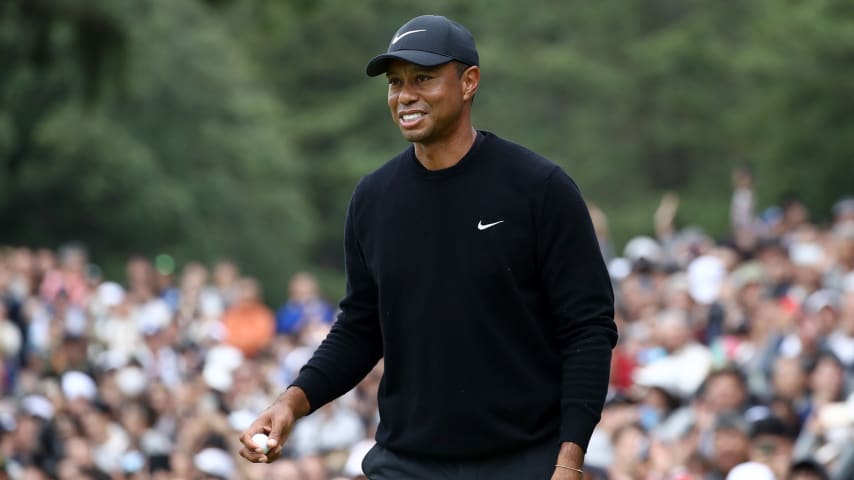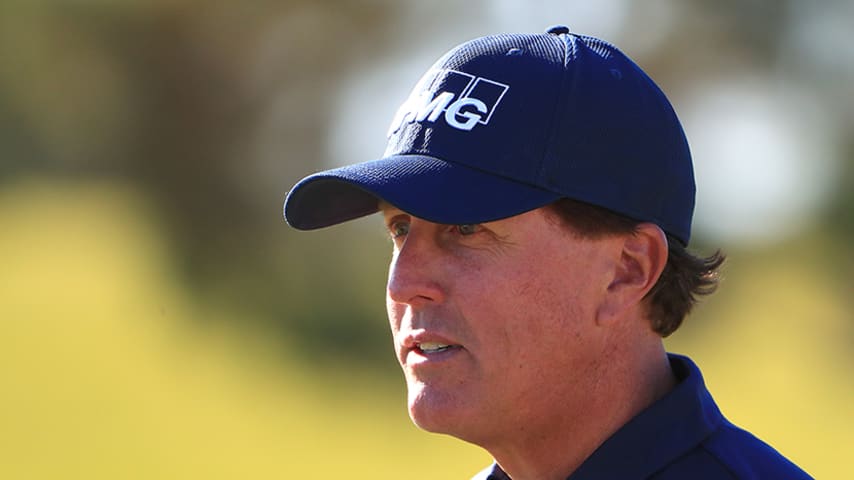PGA TOUR announces significant enhancements to pace-of-play policy
4 Min Read

PONTE VEDRA BEACH, FL - MAY 13: A general view on the first hole prior to Tiger Woods of the United States and Jordan Spieth of the United States teeing off during the final round of THE PLAYERS Championship on the Stadium Course at TPC Sawgrass on May 13, 2018 in Ponte Vedra Beach, Florida. (Photo by Sam Greenwood/Getty Images)
Written by Cameron Morfit
After years of meticulous study and thousands of shots analyzed by ShotLink, and in light of a desire to keep the focus on the golf, the PGA TOUR is announcing major enhancements to its existing slow-play policy that will go into effect at the RBC Heritage in mid-April.
Fines will go up as much as tenfold, stroke penalties could be meted out more frequently, and individual players will be on notice that they’re on the slow list.
“You talk to players, read articles, hear from fans,” PGA TOUR Chief of Operations Tyler Dennis said. “What gets people, what gnaws at them, are these individual habits that people have. It’s seen as bad etiquette, it’s seen as a distraction, and we’re targeting those individual moments to help their fellow competitors and assist our media partners with presentation.
“We want to keep the focus where it should be,” he added. “On world-class shot-making.”
To that end, the TOUR will implement two major enhancements to deter slow play:
The Observation List – Historically, the slow-play policy has focused on groups being out of position. The Observation List will put additional focus on individuals whom ShotLink data has identified as the most egregiously slow players. Those players will go on and off the list based on a 10-tournament rolling period and will be subject to a 60-second average for all shots. If observed by a Rules Official to exceed this time, that player will be timed individually even if the group is in position.
The list will not be made public, but players on the list will be notified that they are on it on a weekly basis. The goal, Dennis said, is for the TOUR to help them change their habits.
Excessive Shot Times – Anyone in the field who takes more than 120 seconds to play a single shot, absent a good reason for doing so, will be given an Excessive Shot Time.
Additionally, fines and penalties for slow play have been enhanced significantly. Officials will now assess a one-stroke penalty for the second bad time in a tournament, not a round, and for every bad time thereafter in the same tournament. The fines for the second bad time in a season and for 10 cumulative timings in a season have also been raised to $50,000.
The fine for a second bad time in a season currently is $5,000.
Rules officials will implement the policy in part by using an app to monitor player times.
“We felt we needed to ratchet up the deterrence,” Dennis said. “We’re significantly upped the ante on stroke penalties. Currently it’s by the round; now it’s going to be over the entire tournament. It’s more likely that a player could find themselves in this situation.”
The Korn Ferry Tour will follow suit and adopt the new policy at a later date.
Since the pace-of-play policy began in 1994, the TOUR has made nine significant policy changes to reduce the overall time it takes to play a round, most recently reducing the number of players who make the cut to 65 and ties.
This is the first time the TOUR has focused on individuals in addition to group position.
“It’s a relatively small number,” Dennis said of the size of the Observation List. “Over the last 12 years, 10 percent of the TOUR membership have averaged 45 seconds or more.”
Those players are considered slow. (Shot times can be as little as a second or two for a tap-in.) Of the high-profile moments that were part of the inspiration for the new rules, he said: “Those incidents were well over a couple minutes in duration. They’re the most egregious examples.
“Some players tend to be methodical about every shot,” he added. “But for other players it’s just certain types of shots. The theory was that if you, over thousands of shots, averaged a certain amount of time, you have a longer-term habitual issue and we need to attack that.”
Zach Johnson, who is on the 16-member Player Advisory Council for 2020, supports the change.
“I love it,” he said. “We're proactive. That's the first thing. To be perfectly honest with you, the policy that's in place has not changed and it will not change, but there is kind of like a tangent arm to that that's going to help facilitate and I think try to make the game a little bit quicker.”
Dennis said the TOUR will focus on education for the next three months, until the new policy goes into effect at the RBC Heritage at Hilton Head, South Carolina.
“We intend to work very closely with the players to help them get off the list,” he said.





